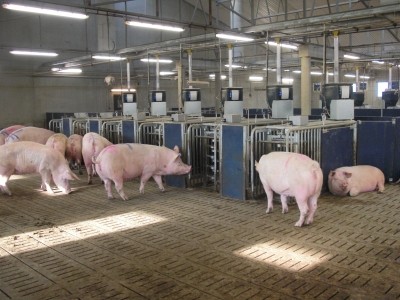Supporting immunity in breeding herd can help control PEDv outbreak on US pig farms: expert

“As the seasons again change and the weather becomes cooler, the environment is more conducive to PED virus survival and transmission. Even though we have seen very few outbreaks of the disease in the past several months we have seen some and thus we know the virus is still present.
In effort to keep this virus from again taking advantage of the colder weather and causing disease issues on our farms, pig farmers need to continue to be very vigilant with farm biosecurity and maintain the immunity level in the breeding herd,” Dr Dave Pyburn, vice president of science and technology at the US National Pork Board, told FeedNavigator.
He was reacting to the findings of the probe undertaken by the Animal and Plant Health Inspection Service (APHIS) of the US Department of Agriculture (USDA).
In a report released last week, the APHIS deemed Flexible Intermediate Bulk Containers (FIBC) or shipping tote bags to be the likely original route of entry for PEDv into the US.
“Evidence collected as part of the investigation suggests that the totes could be potentially contaminated in their country of origin. A small amount of virus can contaminate a tote or equipment. If a contaminated tote bag were used to transport bulk feed or ingredients to a swine feed mill, the contaminated material could have been mixed into feed and then possibly delivered to farms, thus spreading the virus,” said Pyburn.
Sanitary management
The Root Cause Investigation by the APHIS found that most US feed mills receive products and transport feeds in FIBCs including soybeans, scrap pet food, grains, or bulk feed.
And that USDA agency said if FIBCs are indeed the culprits for virus entry to the US market, then not reusing or "yet to be determined methods of sanitary management" prior to reusing the bags could be effective risk mitigation modes of intervention.
The first diagnosis of the virus on a US pig farm was in May 2013. PEDv killed seven million piglets within the first year and caused tremendous hardship for the US pork sector. But the number of new cases has dropped dramatically in the past year.
Though the National Pork Board has funded over $3m in PEDv projects since 2013, covering a wide range of topic areas from basic epidemiology of the disease to pig immunity and also transmission of the virus, it did not look at how the virus found its way into the US to begin with.
“We did not fund research on finding the point of entry of the virus into the US since this is clearly the purview of the USDA,” said Pyburn.
The APHIS report can be read here.















